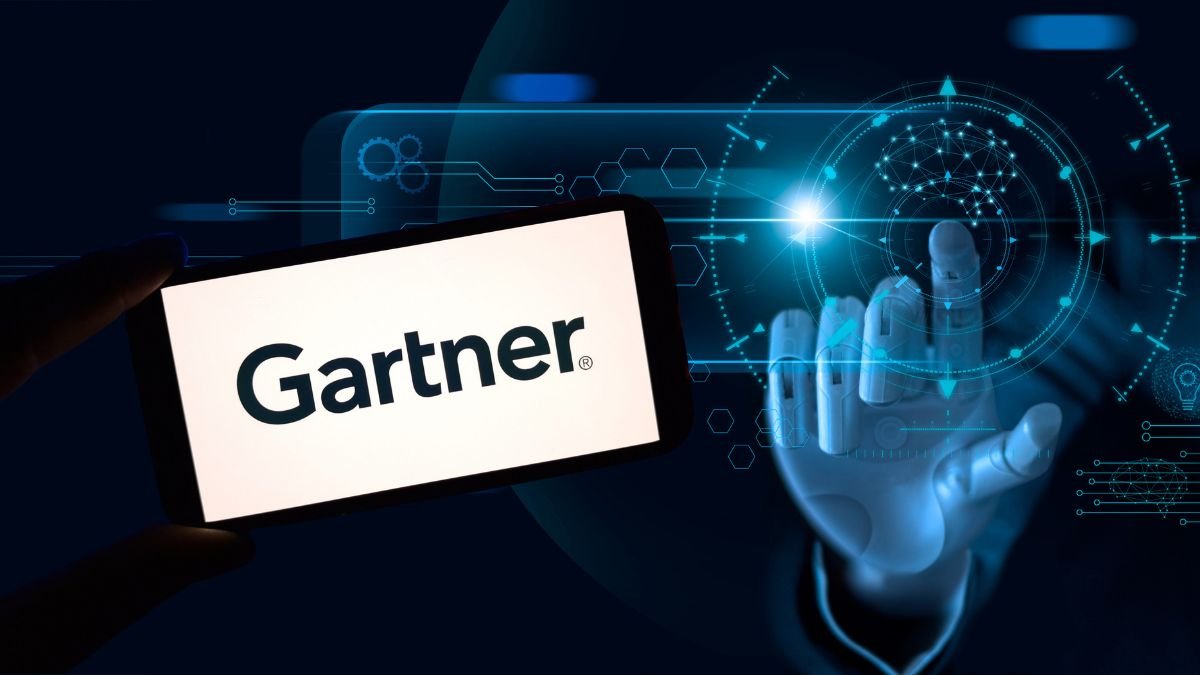
This report acts as a practical map for U.S. businesses to read emerging technology trends 2025 and decide what to pilot now versus monitor. It frames the trends as a connected portfolio that balances near-term productivity gains with long-term resilience.
Key focus areas include agentic systems, governance controls, and defenses against disinformation. These elements will shape how organizations build trustworthy digital capabilities at scale and manage risk while they innovate.
Real-world momentum is already visible: Atlassian’s Rovo supports AI-native teamwork across many SaaS integrations and reports meaningful productivity gains. Such examples show how trends translate into faster decisions, cost control, and a defensible security posture.
This long-form analysis will cover themes, CIO priorities, security and cryptography, computing strategies, human-machine synergy, and a U.S.-focused path forward. Decisions made in 2025 will determine how businesses capture value from maturing technologies through the decade.
Why 2025 Marks a Turning Point for Strategic Technology Trends
The year 2025 shifts technology work from pilots to full-scale programs across industries. This change forces leaders to prove that strategic technology trends deliver measurable productivity while keeping governance and controls intact.
Cross-industry adoption is accelerating, notably in healthcare and finance, where personalization and workflow automation show clear business value but trigger strict compliance needs.
CIOs must gain sharper insights into data readiness, model lifecycle management, and integration patterns to turn pilots into enterprise value. Macro pressures—rising energy costs, tighter regulation, and constant cyber threats—raise the price of failure.
Top strategic technology categories now interlock: more autonomous systems demand stronger governance; new computing approaches need sustainability; human-machine synergy requires ethics by design.
Near-term impacts are tangible: faster time to value, clearer productivity baselines, and closer links between technologies and P&L. The balance of opportunities and risks tightens as auditability, controls, and documentation become mandatory.
This section previews how the article will translate these challenges into practical roadmaps across data, platforms, and operating models for U.S. businesses.
From Hype to Execution: Themes Shaping the Future of AI and Computing
What once lived in labs must now run reliably in production across complex systems and teams. Execution in 2025 means balancing productivity gains with practical governance and clear operational playbooks.
AI imperatives and risks
Productivity potential now comes with model lifecycle duties. Teams must manage model drift, bias, and adversarial threats while keeping decision support transparent.
“Governance must travel with innovation to turn potential into durable value.”
New frontiers of computing
Computing advances push toward efficiency and sustainability. Energy-efficient chips, hybrid architectures, and post-quantum readiness re-balance cost and performance under tight budgets.
Human-machine synergy
Blending digital physical worlds demands safe designs and accessible devices. Spatial computing, adaptable robots, and neurological tools will change how people work and interact.
Disinformation security rises as a core concern. Detecting manipulated content, authenticating information sources, and layered defenses protect brands and operations.
Gartner Identifies Top AI Innovations for 2025 — What CIOs Need to Prioritize
Practical pilots, tight controls, and staged scaling are the levers that separate success from costly missteps. CIOs should focus on three linked priorities that unlock value while managing risk.
Agentic systems as autonomous teammates
Agentic solutions can plan and execute routine tasks without constant human direction. Analysts project ~15% of daily business decisions will be made by such agents by 2028.
Start with bounded domains — customer support, IT operations, or finance — where outputs are verifiable and exceptions escalate to humans.
Governance platforms for transparency and compliance
Governance platforms codify policies, model documentation, and audit trails so auditors and regulators can verify outcomes. Banks already use these platforms to reduce bias in loan reviews and meet compliance requirements.
Link platform controls to data lineage, access controls, and human-in-the-loop checkpoints so results stay auditable and reversible.
Disinformation security to protect brand and stakeholders
Prioritize security tools that score trustworthiness, detect deepfakes, and flag fraudulent information. These capabilities protect executive channels and safeguard stakeholder trust.
Measure progress with pragmatic metrics: faster decision cycles, fewer errors when governance overrides fire, and a drop in disinformation incidents.
Recommendation: Pilot agentic teammates on well-defined tasks, deploy governance early, and add disinformation defenses. This approach delivers early business value while keeping controls, transparency, and trust intact.
Securing the Next Decade: Cryptography and Invisible Intelligence
Quantum-era code and discreet sensor networks will reshape how organizations protect and observe critical assets. Prepare both your cryptographic estate and sensor strategy now so practical benefits appear without unmanaged risks.
Post-quantum cryptography: preparing data for quantum-era threats
Begin with a crypto inventory that flags keys and systems holding data that must stay confidential for a decade or more. Plan staged migrations to quantum-resistant algorithms and build crypto-agility into applications.
Expect changes across key management, certificates, and hardware security modules. Set cross-functional standards and governance checkpoints tied to risk registers.
“Harvest now, decrypt later” actors make proactive protection a near-term priority.
Ambient invisible intelligence: sensors, tags, and privacy-by-design
Sensorized facilities and tagged assets deliver continuous telemetry for predictive maintenance and fewer stockouts. Design streams to minimize personally identifiable data, enforce consent, and set clear retention policies.
Technical steps include testbeds for performance impact, phased cutovers, and alignment with sector standards so systems deliver operational gains while limiting privacy risks.
Sustainable and Scalable: Energy-Efficient and Hybrid Computing Strategies
Squeezing more work from each kilowatt is now a board-level priority for technology leaders. Smart compute choices cut cost and carbon while keeping projects on schedule.
Energy-efficient computing optimizes architectures, algorithms, and hardware to lower energy use and spending. Techniques include right-sizing models, workload-aware scheduling, and hardware acceleration to trim training and inference costs without losing performance.
Energy-efficient computing: reducing AI’s carbon and cost footprint
Practical moves include adaptive clocks, model pruning, and batch-aware inference. Smart offices that dim lighting by occupancy provide a simple analogy: systems that adapt to demand save money and emissions.
Hybrid computing: orchestrating on-prem, cloud, and emerging architectures
Hybrid patterns place sensitive workloads on-prem and push bursty analytics to the cloud. Emerging stacks—quantum testbeds or neuromorphic nodes—fit into this mix but add orchestration and integration complexity.
Platform patterns unify observability, cost controls, and policy enforcement across heterogeneous systems. Combine FinOps and MLOps practices to reduce idle compute and shorten training cycles.
“Pilot sandboxes help validate performance and cost models before broad rollout.”
Near-term tasks: build a workload placement policy, standardize pipelines, and add carbon-aware orchestration. Address challenges like latency and data gravity with zero-trust networking and unified identity across systems.
When done well, businesses see faster cycles, lower TCO, and steady productivity gains—making efficiency a measurable part of strategic technology trends and board reporting on trends 2025.
Human-Machine Synergy in Practice: Spatial, Robotic, and Neuro Advances
Human and machine interfaces are moving from prototypes into daily tools that reshape how teams work. These developments blend digital and physical worlds to make routine tasks safer and faster.
Spatial computing: immersive operations in retail, healthcare, and beyond
Spatial computing uses AR/VR and digital twins to improve store layouts, guide procedures in healthcare, and shorten training cycles. Immersive training can cut time-to-competency and reduce errors in high-stakes settings.
Device cost, user experience, and privacy remain adoption hurdles. Start with controlled pilots that measure error reduction and onboarding time.
Polyfunctional robots: adaptable automation across logistics and manufacturing
Polyfunctional robots perform picking, packing, transport, and inspection across shifting tasks. They raise throughput and remove repetitive strain from workers.
Standardized APIs and pricing barriers slow rollouts. Target staged automation—inventory counts, pallet moves, and quality checks—with human overrides and continuous learning loops.
Neurological enhancement: augmenting learning, safety, and workforce longevity
Early neural interfaces aim at fatigue detection, adaptive learning, and assistive controls to support inclusive workplaces. Trials show promise for personalized training and improved safety metrics.
Ethical issues and data governance for neural signals demand strict policies before wide use. Measure outcomes with KPIs like downtime avoidance and cycle-time compression.
“Combine advances in computer vision and haptics to create more natural interactions that increase acceptance and long-term value.”
Recommendation: Organizations should begin with safety-critical use cases, clear KPIs, and robust systems integration. These advances can be future differentiators but require workforce change management and solid data governance.
Ensuring Systems You Can Trust: Governance, Compliance, and Risk Mitigation
Leaders must build clear guardrails so systems deliver value without creating new liabilities. Begin with enterprise standards and model documentation that map roles, responsibilities, and accountability across the lifecycle.
A practical playbook: standards, policies, and platform-enabled oversight
Start by tiering risk and defining transparency rules for each level. Require explainability for regulated decisions and a record of why a model made a given choice.
Adopt governance platforms to enforce policy, capture audit trails, and enable human-in-the-loop checks. These tools help teams respond quickly to incidents and show evidence to auditors.
Align compliance to model monitoring and retraining schedules. Make evidence collection part of routine processes so organizations can prove adherence without ad hoc reporting.
Embed privacy controls—data minimization, consent, and retention policies—to reduce concerns and strengthen customer trust. Pair these with regular red-teaming and bias testing that feed back into platform rules.
“Standards accelerate safe reuse and let innovation scale without sacrificing oversight.”
Result: When processes, platforms, and change management work together, business teams can innovate while ensuring systems remain transparent, auditable, and trustworthy.
Real-World Momentum: How Organizations Operationalize AI Innovation
Operational success now means folding intelligent agents into daily workflows, not treating them as experimental tools.
Platforms that unify enterprise search, chat, and agents drive this change. Atlassian reports more than 1.5 million monthly users, search across 50+ SaaS apps, 100,000+ customer workflows, and 45,000 agent automations executed by customers.
Early adopters show measurable gains. Pythian saves about 20 minutes per employee per day on knowledge discovery. Procore links customer insights to projects and cuts search time. HarperCollins reduced manual project work fourfold with Rovo Agents.
Translate those results into targets: minutes saved per user, fewer handoffs, and higher task completion rates. Make these KPIs the basis for funding and scaling.
Embed robust content and information governance to limit disinformation and preserve trust. Use playbooks, escalation paths, and performance dashboards to track reliability across systems and operations.
Harden defenses with layered disinformation security controls, including source verification and deepfake checks for executive and customer communications.
“Align roadmaps to business outcomes, not just model metrics.”
Build a center of excellence to codify best practices, speed rollouts, and ensure that technology trends deliver repeatable productivity gains across organizations and businesses.
Charting a Responsible Path Forward for U.S. Businesses
To convert promise into durable advantage, U.S. businesses must pair phased adoption with disciplined oversight.
Build a U.S.-centric action plan that links strategic technology trends to regulation, sector standards, and workforce upskilling in healthcare, finance, and manufacturing.
Deploy governance platforms and policies that make decisions auditable and transparent. Prioritize security-first measures: model risk management, supply chain checks, and incident playbooks that address disinformation security and emerging threats.
Define outcome KPIs—customer satisfaction, cycle-time reduction, and cost-to-serve—and tie investments to measurable gains. Treat data stewardship as a foundation: lineage, retention, and access controls must match workplace realities.
Result: Phase adoption to capture near-term potential while preparing for future shifts in computing and human-machine collaboration. Executive sponsorship and change management make responsible innovation repeatable and trusted. (Research reflects analyst opinion; Gartner does not endorse any vendor.)



